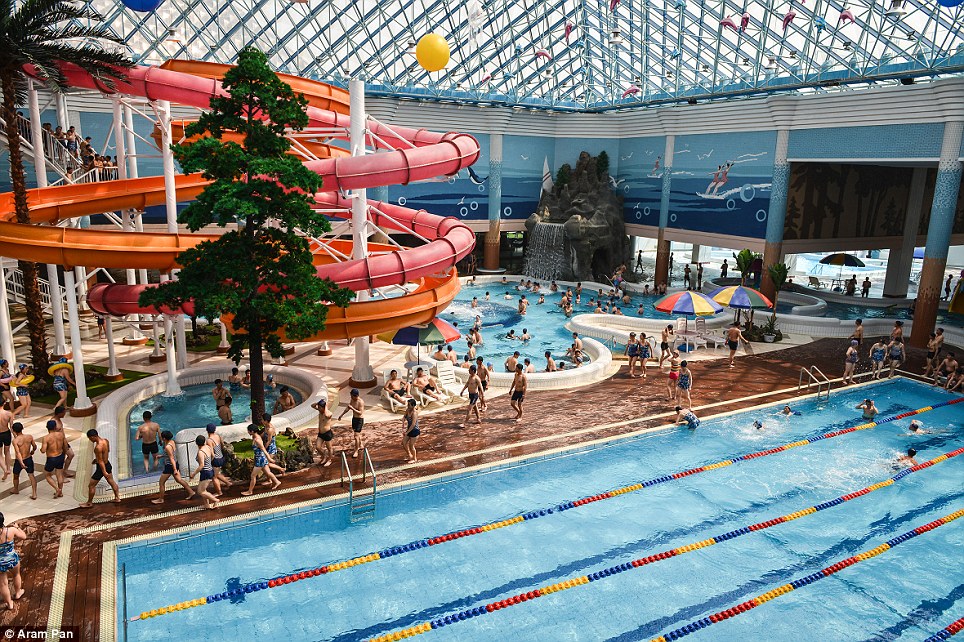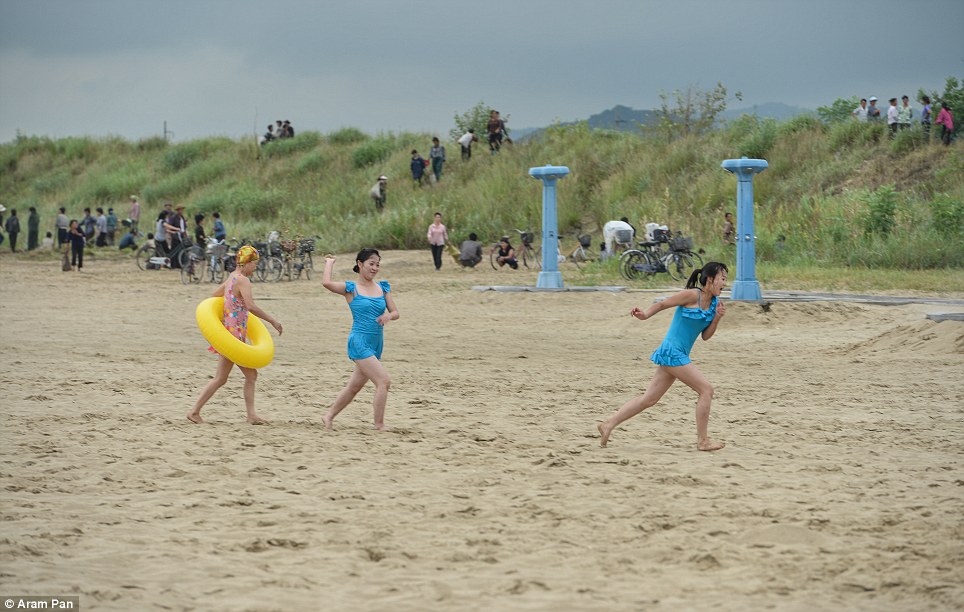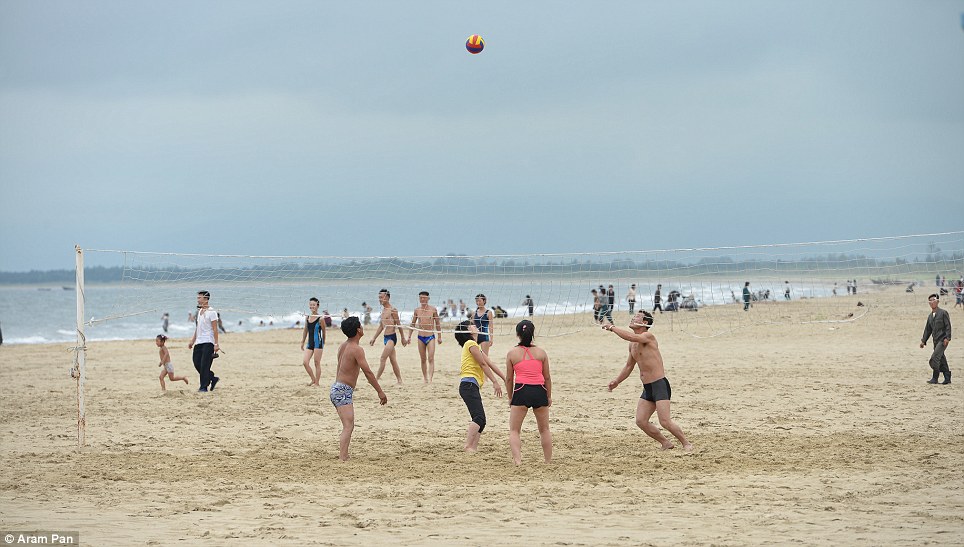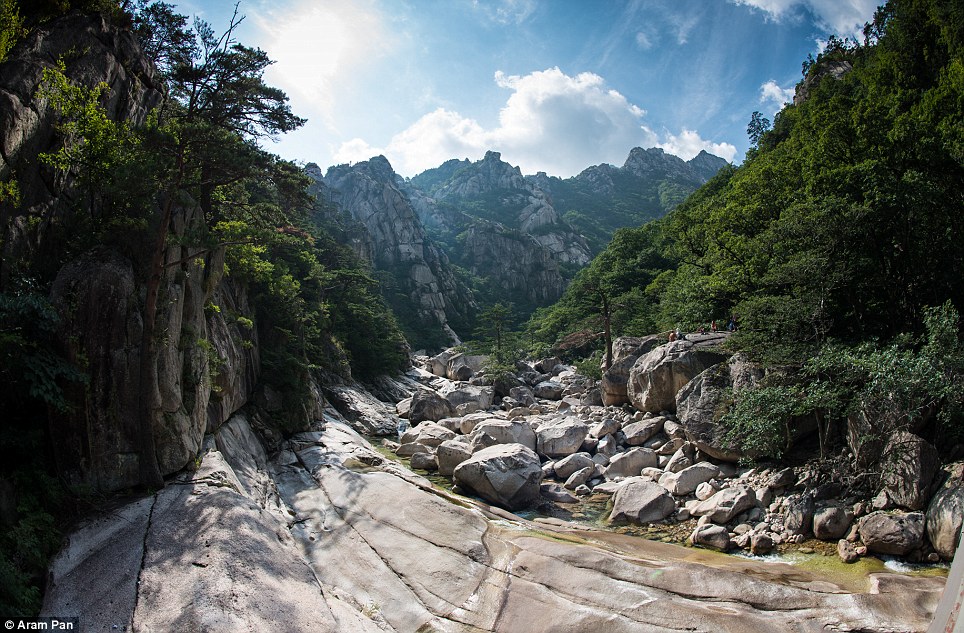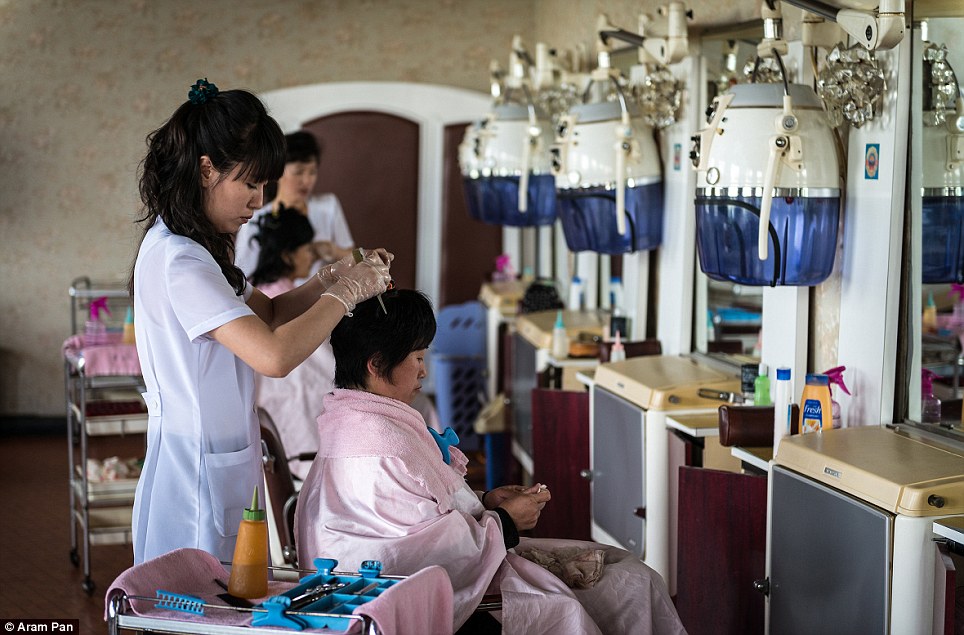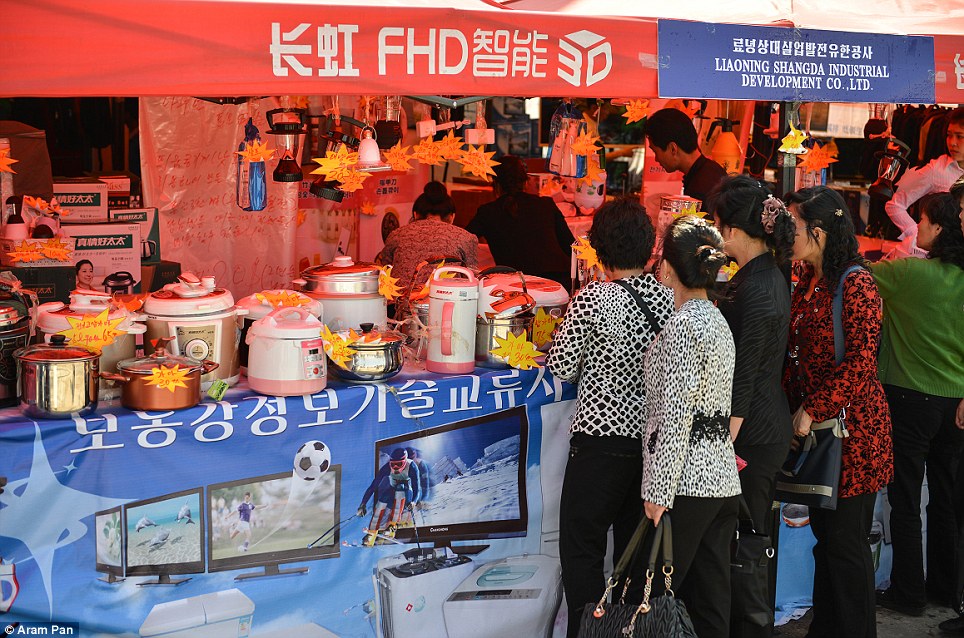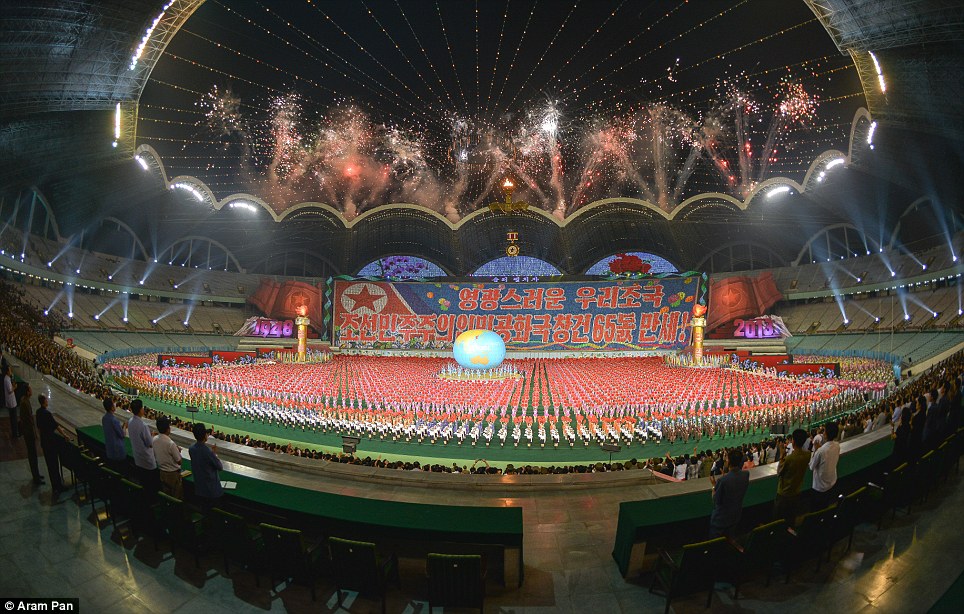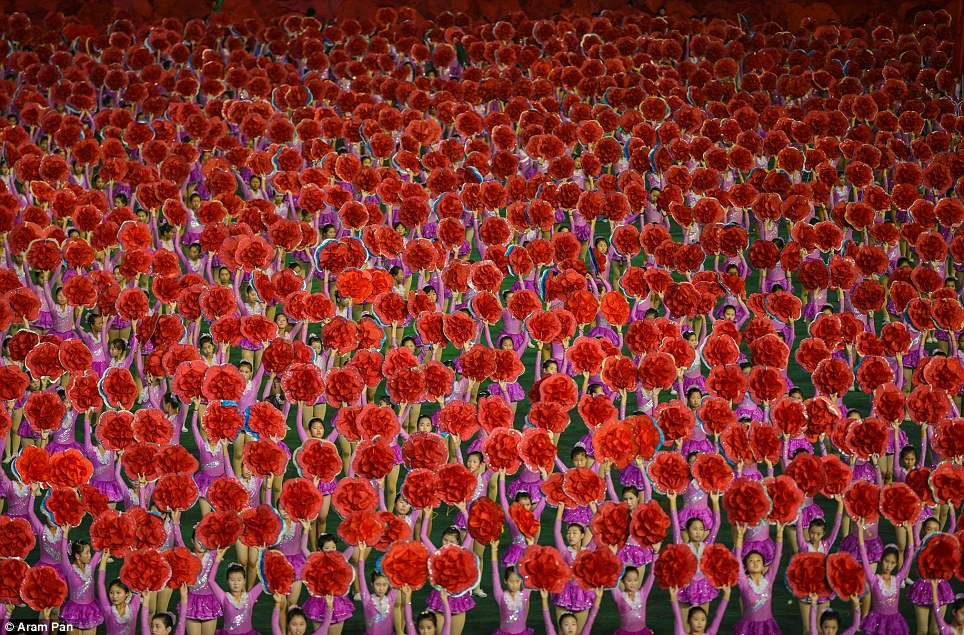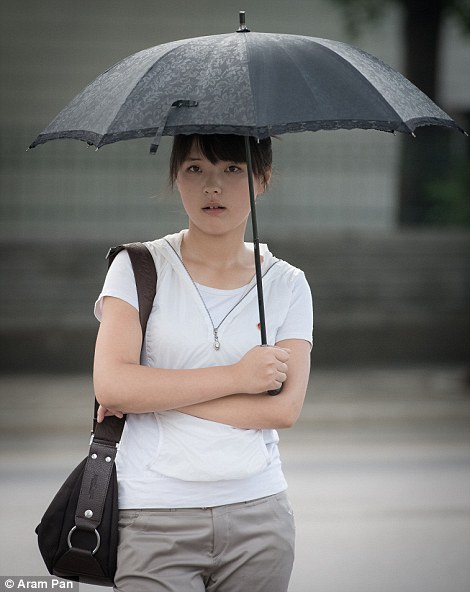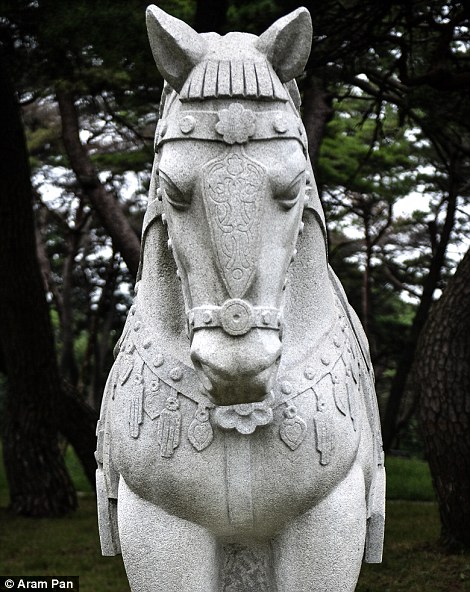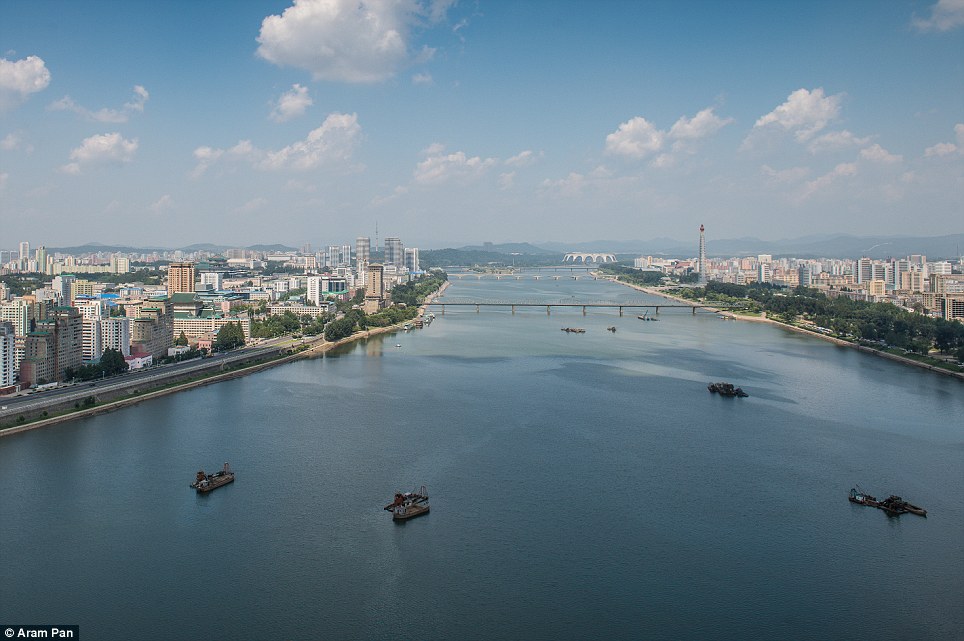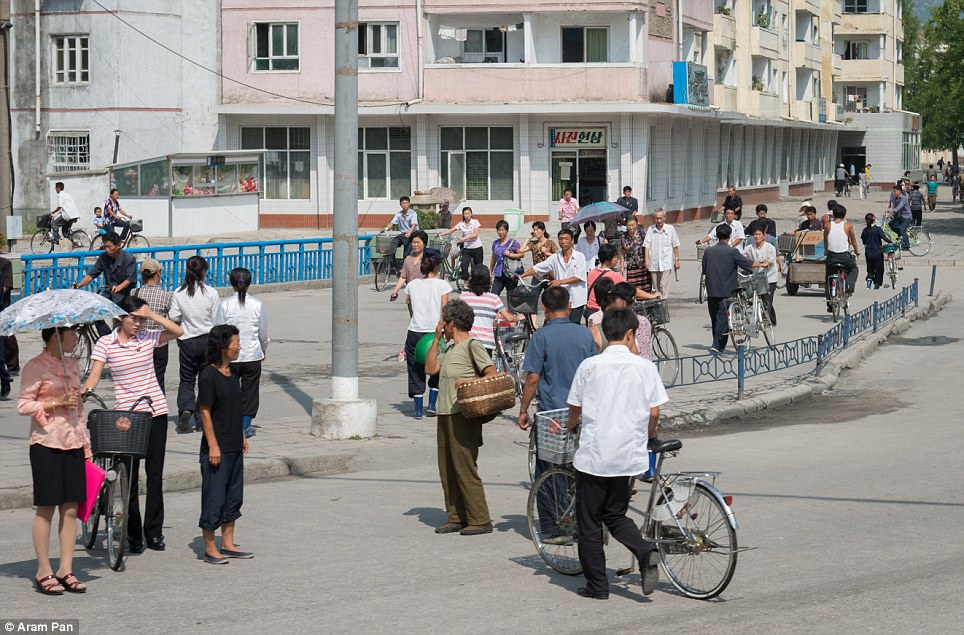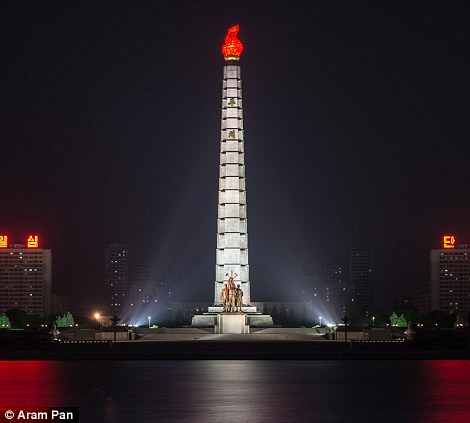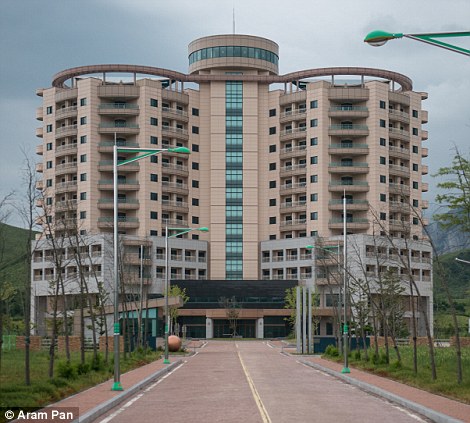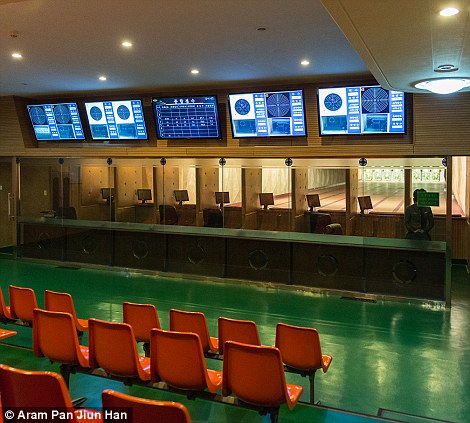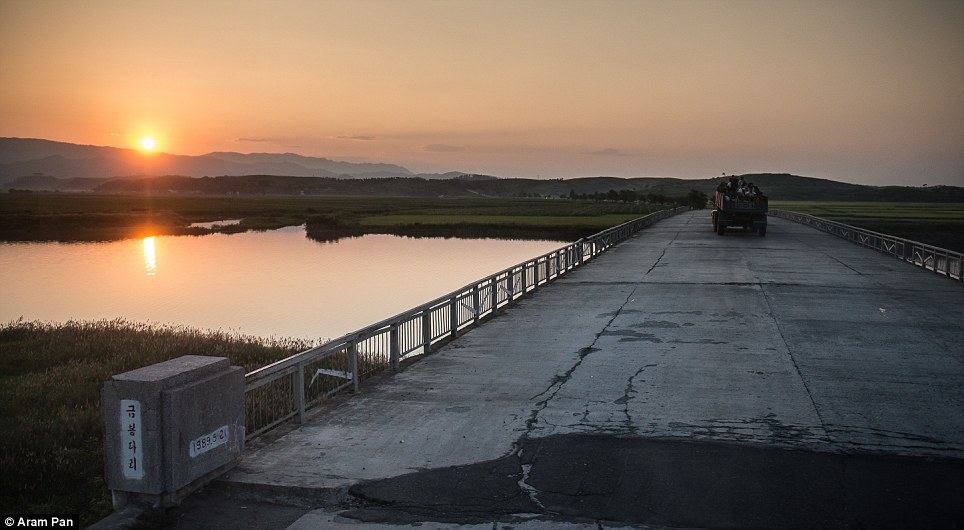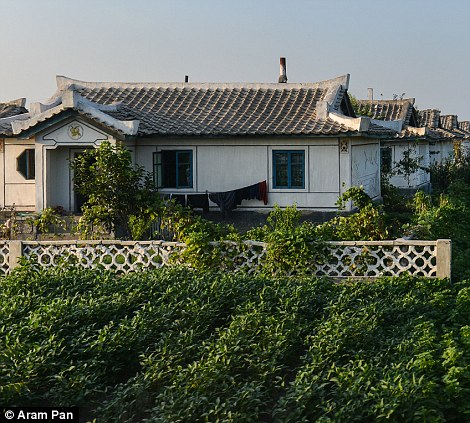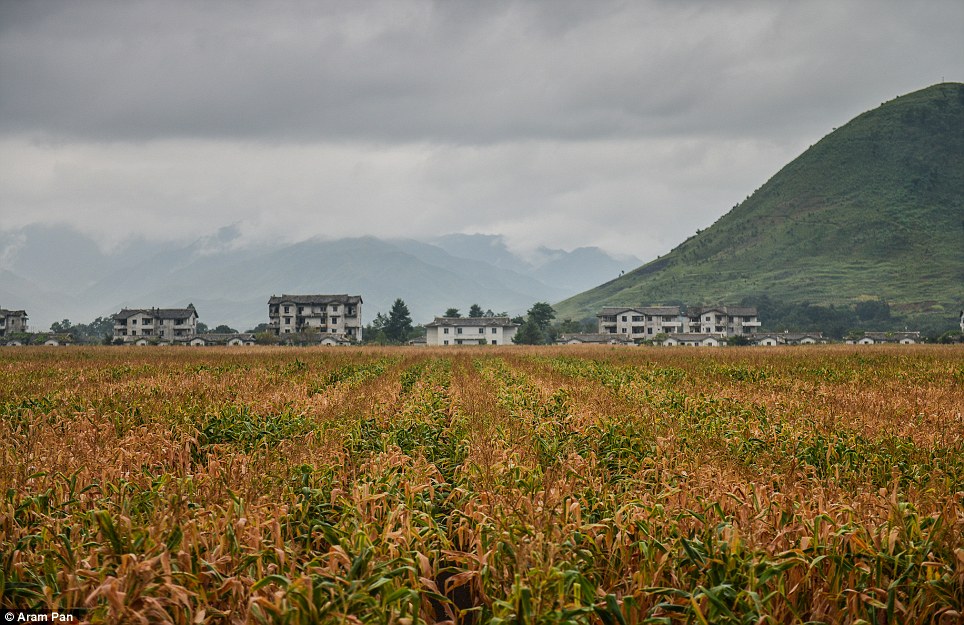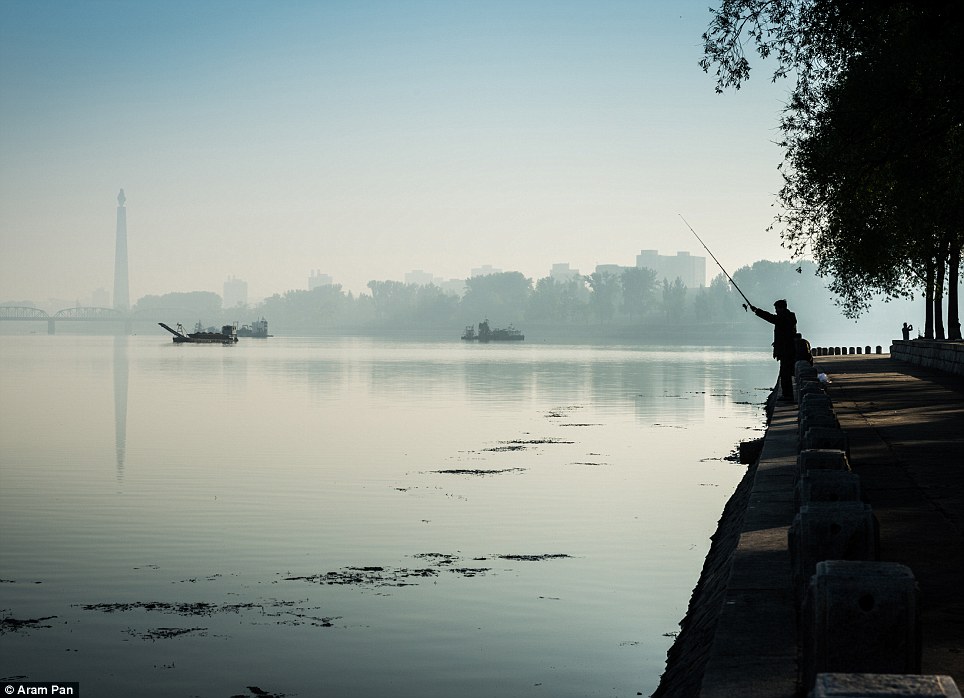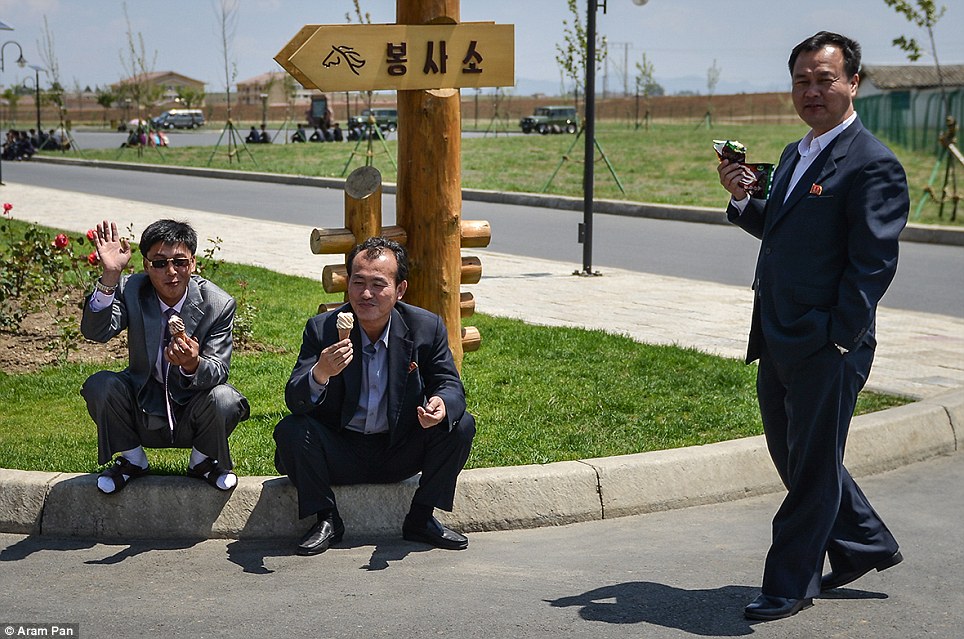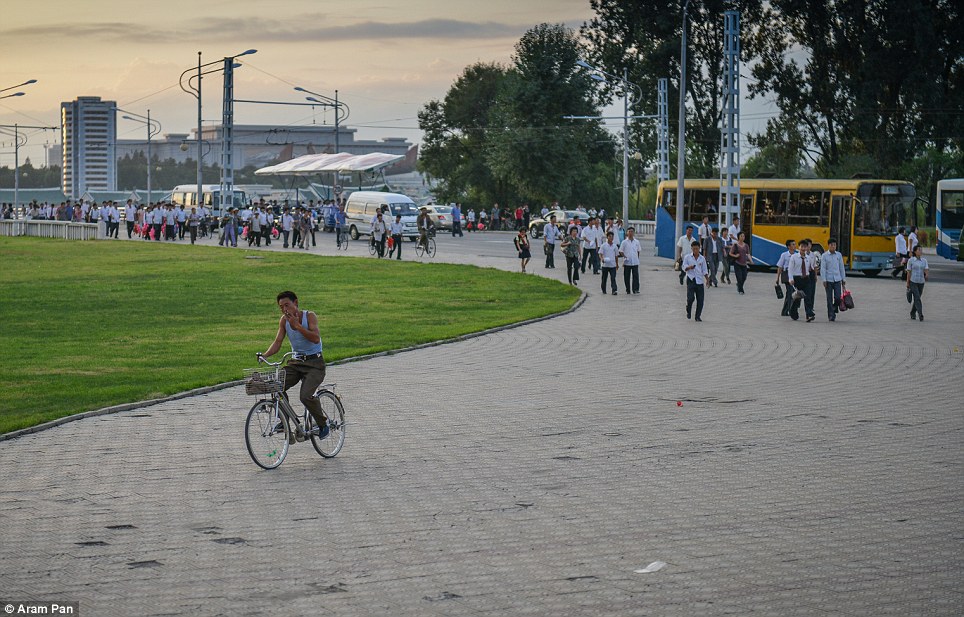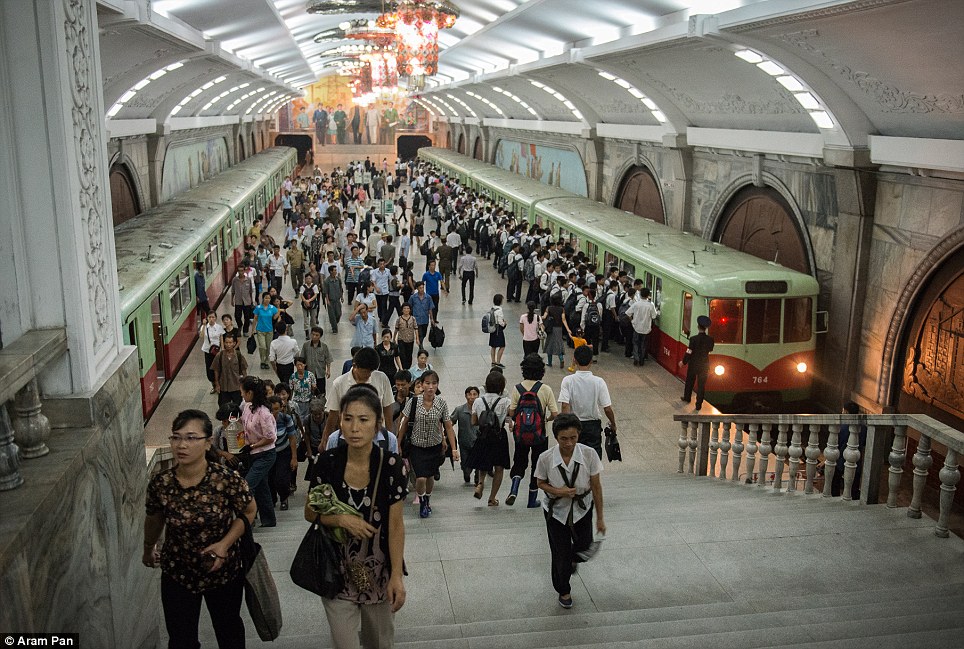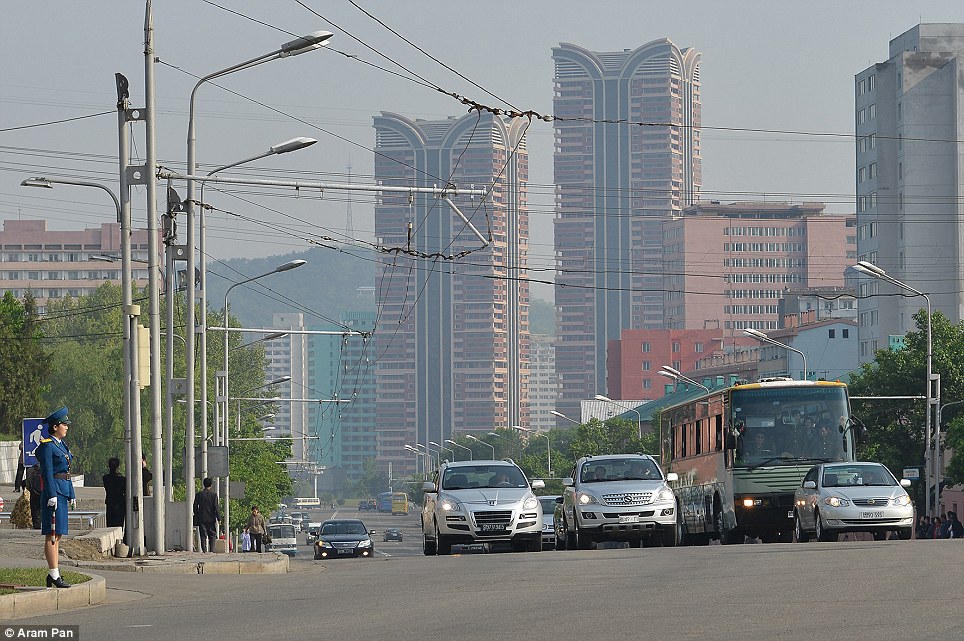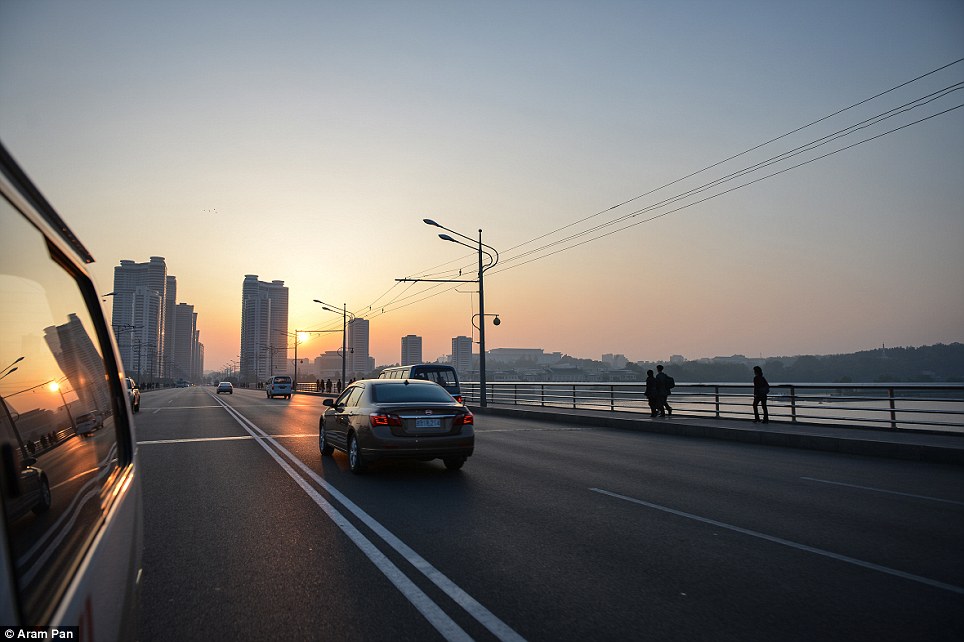When a man from Singapore had his wish to visit North Korea granted, he braced himself for the scenes of ‘barren lands’ and ‘really, really sad people’ that he had seen via a BBC Panorama documentary.
But what he found blew his mind – for all the right reasons.
Inside the communist enclave in 2013, photographer Aram Pan witnessed bustling markets, men and women enjoying themselves at a Western looking water park and miles and miles of crops ready for harvest, shattering all of his illusions about what a holiday to North Korea would entail.
The Munsu Water Park in Pyongyang, North Korea, features colourful water slides, swimming pools and glass pyramids roofs. The complex opened in 2013 and appears popular with locals.
Women in brightly coloured bathing suits throw sand on the beach, as others stand with their bicycles in the background.
In June 2013 it was reported that, as part of his plans to turn North Korea into a ‘world class’ tourist destination, leader Kim Jong-un ordered the transformation of the industrial port of Wonsan into a beach resort town.
A stunning view from Mount Kumgang, a 1,638-metre-high mountain in Kangwon-do, North Korea.
A woman in a pink gown gets her hair dyed at an old fashioned hairdressers. Mr Pan said: ‘People seem to go about their daily lives and everything looks so incredibly normal.’
Consumer goods, such as electrical rice cookers and other kitchen appliances, have begun to flood North Korea via China.
Fireworks explode during the climax of the Arirang Mass games 2013. The Stadium is undergoing renovation so there will be no Arirang Mass Games for 2014.
Young girls hold up red flowers at the Grand Mass Gymnastics and Artistic Performance Arirang, a gymnastics and artistic festival held in the Rungnado May Day Stadium in Pyongyang, North Korea.
A horse statue stands at the tomb of King Tongmyong. The sacred site was built when King Jangsu transferred his capital from Hwando Mountain Fortress to Pyongyang in 427 AD. The Royal Tomb of King Tongmyong is one of 63 tombs that exists in five zones of North Korea.
The city of Pyongyang seen from the Yanggakdo Hotel, where Mr Pan was staying.
A sunny afternoon in Kaesong Town. The city is near Kaesong Industrial Region close to the border with South Korea and contains the remains of the Manwoldae palace.
The Tower of the Juche Idea is a monument in Pyongyang named after the ideology of Juche introduced by its first leader Kim Il-Sung. It was built in 1982 and the Tower is sited on the eastern bank of the River Taedong, directly opposite Kim Il Sung Square.
Kumgang Reunion Centre is the place where families from the North and South side meet.
The Meari Shooting Range has a restaurant that will cook the chicken that you’ve shot.
Mr Pan captured a stunning sunset as he drove through the rural areas of the country. He said he was escorted throughout his time in North Korea but had no schedule to follow and was given the ability to move around quite freely.
The photo above shows a typical house in the countryside.
The fields looked ready for harvest as the photographer visited. ‘Why would anyone mock up miles and miles of crops as far as my eyes can see?,’ he wondered in disbelief that the things he saw could have been put on as a show.
Mr Pan sampled the local cuisine while in North Korea. ‘Possibly the most unusual dish I’ve ever eaten. Gasoline cooked clams,’ he joked.
On his early morning walk around the country’s capital, Mr Pan hoped he could capture photographs that would show a glimpse of the people and everyday life that has been often overlooked in favour of military and political images.
North Korean men wearing suits enjoy ice cream in the sunshine, contradicting the most commonly cited cliche that North Korea is a ‘destitute, starving country’. One man perches on a kerb and waves in his white socks and sandals.
When Mr Pan visited North Korea he saw workers clocking off at 6pm and heading home. Contrary to what a majority of people tend to believe, the last decade has been one of moderate economic growth north of the DMZ.
The Pyongyang Metro shows school children waiting to board a train and commuters leaving the station.
The streets of Pyongyang featured cars and buses like any other city but far less traffic.
There is more traffic than ever on the once notoriously empty avenues of Pyongyang. In this photo shiny looking cars are seen driving along the highway as the sun sets.
Many people get the impression that North Korea is a strange and frightening country, but these photos reveal a different side to the hermit nation that most people have never seen. Share these stunning photos with others below.
